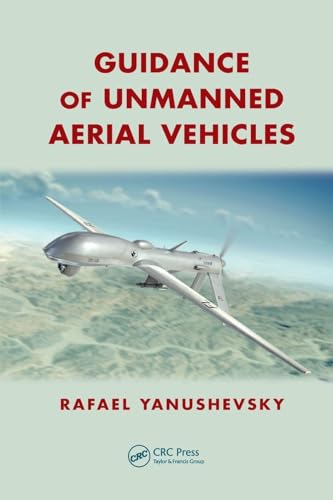


Drones, also known as Unmanned Aerial Vehicles (UAVs), have become increasingly popular in recent years for various purposes such as photography, delivery, surveillance, and even recreational flying. However, a common question that arises is whether drones are considered aircraft by aviation authorities.
According to the Federal Aviation Administration (FAA) in the United States, drones are indeed classified as aircraft. This classification means that drone operators are subject to certain regulations and restrictions similar to those governing traditional manned aircraft.
While drones may not have a pilot on board, they are still capable of flying in the airspace and have the potential to pose risks to other aircraft and people on the ground. Therefore, it is essential for drone operators to understand and abide by the rules set forth by aviation authorities to ensure safe and responsible drone use.
Are Drones Considered Aircraft
When it comes to the question of whether drones are considered aircraft, the answer is not always straightforward. In general, drones are classified as aircraft by aviation authorities around the world. This classification is based on the fact that drones are unmanned aerial vehicles that can fly in the airspace, similar to traditional manned aircraft.
From a legal perspective, drones are subject to many of the same regulations and rules that apply to manned aircraft. This includes restrictions on where drones can fly, altitude limits, registration requirements, and licensing for commercial operations. In many countries, drones are considered aircraft under the law and are subject to the same aviation regulations as other types of aircraft.
Regulations and Classification
Aviation authorities such as the Federal Aviation Administration (FAA) in the United States and the Civil Aviation Authority (CAA) in the United Kingdom have specific regulations that govern the operation of drones. These regulations treat drones as aircraft and require drone operators to comply with airspace restrictions, safety guidelines, and registration requirements.
Conclusion
| Drones are considered aircraft by aviation authorities. |
| They are subject to similar regulations and rules as manned aircraft. |
| It is important for drone operators to be aware of and comply with aviation regulations. |
Definition of Drones
In the context of aviation and aviation regulations, drones, also known as unmanned aerial vehicles (UAVs), are defined as aircraft. The Federal Aviation Administration (FAA) in the United States considers drones to be aircraft, subject to certain rules and regulations that govern their operation in the national airspace.
Characteristics of Drones
Drones are typically small, remotely piloted aircraft that can be operated by a human pilot or autonomously through pre-programmed flight paths. They are equipped with sensors, cameras, and other technology that allow them to perform a variety of tasks, from aerial photography and surveillance to package delivery and search and rescue operations.
| Aspect | Description |
|---|---|
| Size | Drones come in various sizes, from small hobbyist drones that fit in the palm of your hand to larger commercial drones with wingspans of several meters. |
| Capabilities | Modern drones are equipped with advanced features such as GPS navigation, obstacle avoidance, and stabilized cameras for capturing high-quality photos and videos. |
| Regulations | As aircraft, drones are subject to aviation regulations that govern their safe operation, including rules on where and how they can be flown. |
Regulations on Drone Usage
As drones are considered aircraft by aviation authorities, there are strict regulations governing their use. Operators must adhere to airspace restrictions, fly below certain altitudes, and maintain visual line of sight with the drone at all times. Additionally, drones are prohibited from flying near airports, military installations, and other sensitive areas. It is important for drone operators to familiarize themselves with the specific regulations in their country to ensure safe and legal operation of their drones.
Classification of Drones
Drones can be classified into different categories based on their size, capabilities, and use cases. Here are some common classifications:
1. Size:
Drones are typically categorized based on their size, such as nano, micro, mini, small, medium, and large drones. Each size category has its own advantages and limitations.
2. Capability:
Drones can also be classified based on their capabilities, including camera drones for aerial photography and videography, racing drones for high-speed racing competitions, agricultural drones for crop monitoring and spraying, and delivery drones for transporting goods.
Similarities Between Drones and Aircraft
Although drones and aircraft have distinct characteristics, they share several similarities:
- Flight Capability: Both drones and aircraft are designed to fly through the air, utilizing various propulsion systems to achieve lift and propulsion.
- Navigation Systems: Both drones and aircraft rely on navigation systems such as GPS to determine their position and navigate in the airspace.
- Regulations: Both drones and aircraft are subject to aviation regulations and airspace restrictions to ensure safe operations.
Differences Between Drones and Aircraft
While drones are often referred to as unmanned aerial vehicles (UAVs) and may share some similarities with traditional aircraft, there are several key differences between them:
1. Pilot Presence
Drones: Drones are typically operated remotely by a pilot on the ground or may even be autonomous, without a pilot controlling them directly.
Aircraft: Aircraft are manned vehicles with a pilot or crew on board responsible for controlling the flight.
2. Size and Design
Drones: Drones come in various sizes, shapes, and designs, ranging from small quadcopters to larger fixed-wing models.
Aircraft: Aircraft are usually larger in size and have a more traditional airplane or helicopter design.
Legal Implications of Drone Classification
Classifying drones as aircraft carries significant legal implications. In most jurisdictions, aircraft are subject to specific regulations and laws that govern their operation, safety standards, and airspace restrictions. By classifying drones as aircraft, they may be subject to the same regulatory framework as traditional manned aircraft, including requirements for registration, licensing, and compliance with aviation rules.
Furthermore, treating drones as aircraft could impact liability issues in the event of accidents or incidents involving drones. If drones are considered aircraft, operators may be held to the same standards of care and responsibility as pilots of manned aircraft, potentially increasing their legal liability in case of accidents.
On the other hand, classifying drones as aircraft could also open up opportunities for commercial and recreational drone operators to access certain privileges and airspace that are currently restricted to manned aircraft. It could also pave the way for the development of new regulations tailored specifically to address the unique challenges and opportunities presented by the proliferation of drones.
The Future of Drones in Aviation
As drones continue to gain popularity and advancements in technology, their role in aviation is evolving rapidly. In the future, drones are expected to play a significant role in various aspects of the aviation industry, including aerial surveillance, cargo transportation, search and rescue operations, and even passenger transportation.
With ongoing research and development, drones are becoming more sophisticated, capable of flying longer distances, carrying heavier payloads, and operating autonomously. This opens up new opportunities for drone applications in aviation, such as monitoring airspace, inspecting infrastructure, and assisting in emergency situations.
Regulatory bodies are also adapting to the increasing use of drones in aviation by developing rules and guidelines to ensure safety and integration into existing airspace. As drone technology continues to mature, we can expect to see a more seamless integration of drones into the aviation ecosystem, offering new possibilities and efficiencies for various industry sectors.
FAQ
Are drones considered aircraft?
Yes, drones are considered aircraft by the Federal Aviation Administration (FAA) in the United States. According to the FAA, a drone is defined as an “aircraft,” and therefore subject to the same regulations and restrictions as traditional manned aircraft.
Why are drones considered aircraft?
Drones are considered aircraft because they operate in the national airspace and have the potential to pose similar safety and security risks as manned aircraft. By classifying drones as aircraft, regulatory authorities can ensure that they are operated safely and responsibly, protecting both the drone operators and other airspace users.







